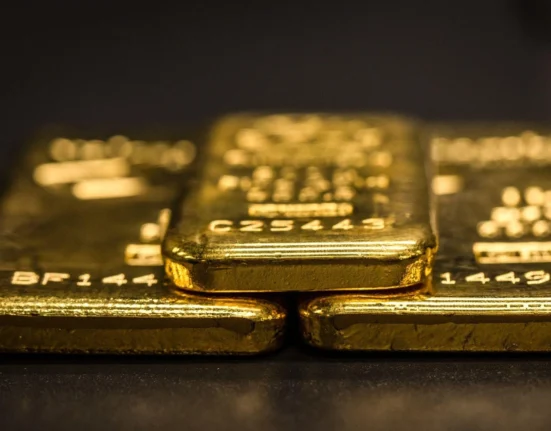However, there is much more to women’s affinity for gold. We spoke to women from different walks of life to understand what drives their conviction in gold, what the precious metal means to them and how their buying patterns are shifting.
In gold we trust
Noida-based fashion designer Madhobi Mathur, 51, has a ritual. On every birthday and wedding anniversary, she visits her favourite jewellery store to purchase a gold ornament. The budget invariably gets stretched, but her husband happily obliges. Initially driven by personal desire for adornments, Mathur now sees it as a secure asset for her family and kids. “Gold is an integral asset in our family wealth. In emergencies, I feel it is only gold that can bail you out,” she says.

Madhobi Mathur,
51, fashion designer,Noida
Purchases gold on every birthday and wedding anniversary.
Doesn’t believe in purchasing on festive occasions or auspicious days.
Apart from personal desire for gold ornaments, sees gold as a secure asset for her family. Gold is an integral part of her family’s wealth.
Has opted for gold savings scheme to afford the purchase of desired highvalue jewellery.
Note:“In emergencies, I feel it is only gold that can bail you out.”
“Gold never feels like a bad investment. When everything else goes awry, gold will save you,” concurs Prachi Choudhary, 31, a Mumbai-based investment professional, who has been buying gold for three-four years. This fealty to the yellow metal flies against sceptical voices. Even seasoned investment professionals and financial advisers have typically given gold only a modest nod as an asset class. Some argue that the precious metal has no intrinsic value as it doesn’t pay any interest or dividends. At best, it is seen as a portfolio diversifier”, she says.
By many standards, that’s a fair assessment, but gold’s meteoric rise in recent years has challenged this conventional wisdom. For the Indian woman, gold isn’t just an asset. It’s deeply woven into her psyche as a safeguard against financial hardship—a shield against inflation, uncertainty and adversity. Mahendra Luniya, Chairman, Vighnaharta Gold, observes, “Indian women have long understood that gold’s worth goes far beyond its ornamental appeal. It has never been just about the shine. Gold has always stood for financial security, social standing, and smart investing.”
Prithviraj Kothari, Managing Director of RiddiSiddhi Bullions, asserts, “It is woven into every corner of women’s lives in India, including weddings, festivals and inheritance. However, gold is now viewed beyond an ornament, as women see gold as a safe liquid financial asset and a hedge during emergencies.” This role of gold is established in empirical evidence. A report by smallcase manager SmartWealth.ai reveals that gold has consistently acted as a natural hedge during major equity market downturns over the past 20 years.
Gold shines in times of crisis
Empirical evidence backs women’s faith in gold.

Then, there is the emotional connect. Says Amol Joshi, Founder, PlanRupee Investment Services, “Gold is often earmarked for passing on to the next generation, particularly to daughters.”

Leena Bhonde,
47, family physician,Pune
Realised necessity for buying gold after facing crunch at the time of her own wedding.
After having her own children, she has accumulated gold steadily over 18 years.
Had 40% of assets in gold at one point. On financial adviser’s advice, she stopped accumulating gold after 2015 and started building a more balanced portfolio.
Note:“One doesn’t tend to liquidate one’s gold due to emotional attachment.”
Dr Leena Bhonde, 47, a family physician from Pune, accumulated gold over 18-odd years with a steadfast resolve. Her craving for the asset was bred in the wake of a harsh lesson.
“My father didn’t have adequate gold for my wedding. He lamented neglecting buying gold for so long. That episode hammered in me the necessity for owning gold,” recounts Bhonde. After having children of her own, she started accumulating gold to amass adequate quantity over time. “One doesn’t tend to liquidate one’s gold due to the emotional attachment. At the same time, gold can be quickly pledged to raise cash in an emergency,” she says.
For many women, gold represents a safeguard against lack of financial autonomy. Aksha Khamboj, Vice President, India Bullion & Jewellers Association (IBJA) and Executive Chairperson, Aspect Global Ventures, insists gold is not just about bedecking for women; it’s about what it represents— security, freedom and heritage. “It’s more of a savings mechanism and their silent safety net, rather than merely a piece of jewellery,” she says.
Gold received as gift by a woman at the time of marriage count as her streedhan. According to a Supreme Court ruling, the woman has the sole right over this pot of jewellery. It cannot be claimed by her husband or in-laws even in the event of a separation or divorce. It draws a ‘Lakshman rekha’ around the gifts received by a woman during marriage, protecting her from adversity. This marital gold is not taxable in the woman’s hands either. Law also permits a married woman to keep 500 gram of gold at home, while an unmarried woman gets to keep 250gram.
From aesthetics to convenience
Women’s affinity for gold is traditionally tied to its physical form. Its aesthetic appeal in the form of intricately carved ornaments remains its biggest draw. However, women’s relationship with gold is gradually evolving from mere symbolism.

Rebecca Prakash,
43, communications executive, Mumbai
Hailing from a south Indian family, buying and wearing gold jewellery is a tradition in her household.
After relocating to Mumbai, her gold kept lying in the bank locker.
Instead of wearing gold, she finds immense value in alternatives like gold ETFs and sovereign gold bonds.
Buys smaller amounts of digital gold every day of the week via investment platforms.
Note:“I’m more inclined towards gold funds as these are more convenient and help avoid hefty making charges.”
Meet Mumbai-based communications professional Rebecca Prakash, 43, who hails from a south Indian family, where gold jewellery has traditionally been integral to household tradition. However, her perceptions shifted after relocating to Mumbai. “Down south, it is quite normal to wear heavy gold jewellery, but in Mumbai, not everyone wears bling. So most of my jewellery was simply lying in the bank locker,” she remarks.
As she began earning, Prakash discovered alternative ways to invest in gold. She started putting money in gold ETFs and sovereign gold bonds, finding great value in the metal’s digital avatar. “While my love for gold jewellery remains, I prefer gold funds. They are more convenient and help me avoid hefty making charges,” she says.
Increasingly, demand for gold has started shifting to the digital form. For Choudhary, buying gold jewellery or coins is restricted to specific life events, such as on the birth of her child or upon receiving the annual bonus. Mostly, however, she buys in the form of gold ETFs as part of her monthly investment outlay. “I don’t find much use for gold jewellery on a daily basis. Gold ETFs offer better convenience as I can buy digitally at a much lower ticket size without incurring additional costs,” she says.
She briefly explored sovereign gold bonds (SGB) as well. However, she found it tricky to plan her investments around sporadic issuances of the bonds. The route is now closed altogether, with the government abandoning further SGB issuances.
The shift towards the digital avatar of gold is evident in the 13-fold increase in gold ETF folios from March 2020 to March 2025. “A growing number of women now see gold, particularly digital gold and ETFs, as part of their wealth creation and portfolio diversification, effectively combining tradition and modern investing,” says Kothari. Khamboj says younger women are exploring digital gold, whether through apps, wallets, or gold savings plans. “Physical gold will always hold sentimental value, but now women desire flexibility and convenience,” says Khamboj.
Time to rethink?
With gold prices skyrocketing, women have undoubtedly found the proverbial pot of gold. Tradejini COO Trivesh D. remarks, “Indian women deserve credit for their longstanding practice of investing in gold, not as a trend, but as a habit rooted in wisdom. They have quietly built family wealth through gold and, today, it’s proving to be one of the smartest assets to hold.” Luniya concurs, “Trust in gold isn’t perpetuated just through cultural practice, but is also reflective of practical financial wisdom passed down generations.”
Today, a sense of vindication is apparent among women who persisted with gold. “I feel chuffed that I am sitting on a dependable asset. My decision to keep buying gold is surely justified, even when my husband was sceptical,” quips Mathur. She remains keen on adding gold. “No amount of gold is ever enough. I want to build on the existing gold assets,” she declares. Bhonde was always convinced her gold savings would come good one day, but never imagined that gold prices would soar so high. “In hindsight, I wish I had bought even more,” she chuckles, tongue firmly in cheek.
Yet, experts warn against getting carried away. “The breathtaking rally in gold in the past three-six months has added to its aura, but let’s not forget that gold has seen punishing time corrections in the past,” Joshi cautions. Indeed, for every phase of superlative gains, gold has gone through prolonged slumps. There have been extended periods when the precious metal has yielded no return. Before gold began its most recent ascent in 2018, it had taken the hallowed metal nearly seven years to regain its 2012 peak. Even as gold is now being perceived as more than just a ‘safe haven’ asset, it remains vulnerable to cycles like any other asset.
Gold purchases on Akshaya Tritiya have rewarded buyers in the past
Such high returns may not sustain in the coming years.

“Gold can be your stability anchor,but don’t let it turn into your lifeboat,” urges Tradejini’s Trivesh D. He feels retail investors should keep gold exposure between 10-15% of their portfolio. That is enough to cushion against volatility. After many years of amassing gold, Bhonde refocused a few years ago. She stopped accumulating the metal after 2015, when her financial adviser put her on a balanced investing diet.
She embarked on building a more well-rounded portfolio of mutual funds, bringing allocation to gold down from a staggering 40% to a prudent 18%. Joshi reckons gold does not warrant a lion’s share of the investor’s portfolio for one critical reason. “The typical investor will not consider selling her gold. It will be liquidated as the last resort, when all other avenues are exhausted. This behaviour prevents gold from being used as a viable asset,” Joshi says.
Indian women buy gold jewellery mainly for its financial value
Their ideal product choice is something that offers durability and is seen as a good financial investment and/or family heirloom.

Gold has seen prolonged slumps before
Depreciation in the local currency and added duties have kept domestic gold prices buoyant.









